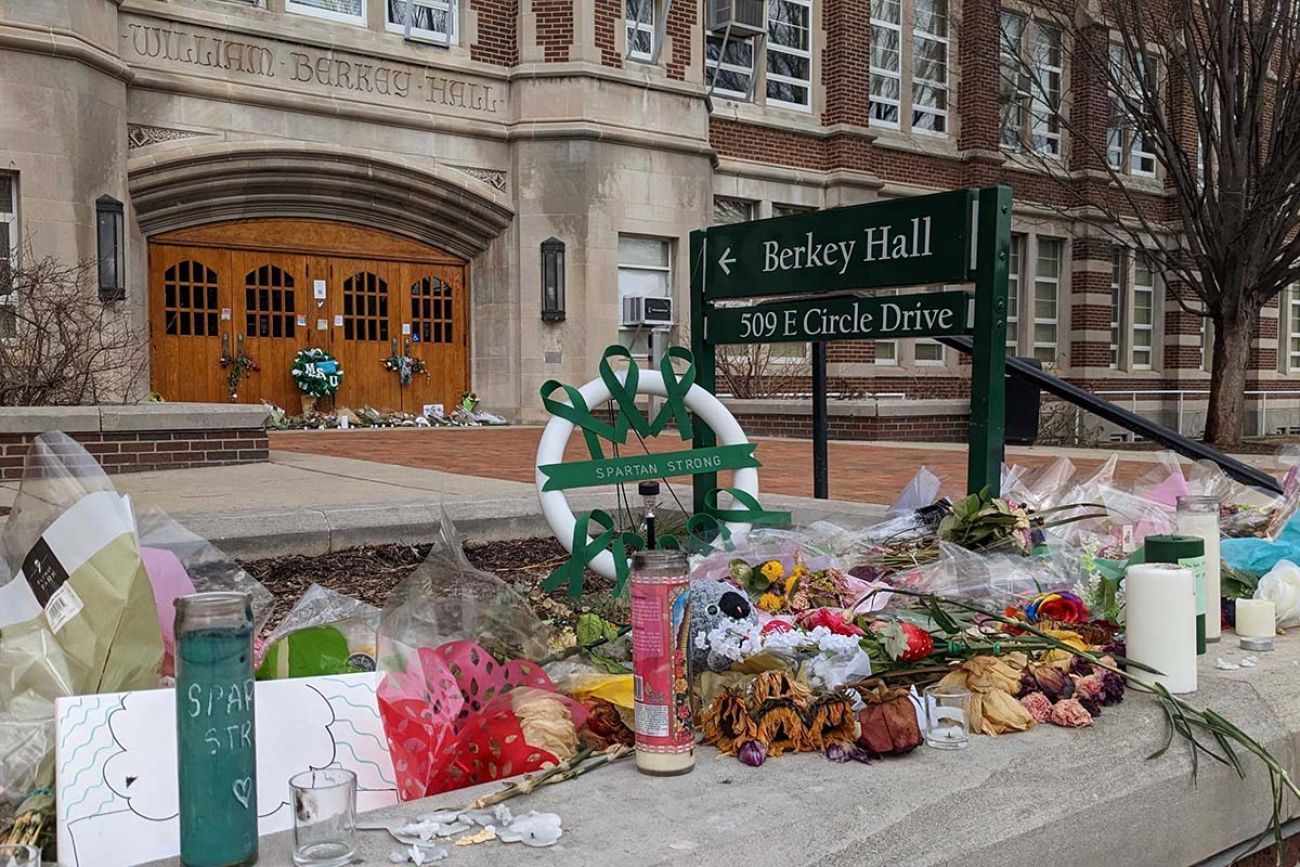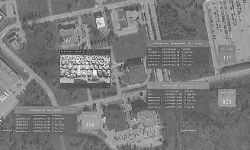Michigan State University 911 calls: Students broke windows to escape shooting

- Ingham County Central Dispatch released the first 10 calls to 911 from the mass shooting at Michigan State University
- Some calls suggest students were shot in more than one Berkey Hall classroom, but MSU says that's incorrect
- Dispatch encouraged students to leave through windows, barricade themselves in and tend to the wounded
Editor's note: This account contains disturbing and graphic accounts of a mass shooting. It was updated late Friday to include new statements from MSU about the location of gunfire within Berkey Hall.
LANSING — Shortly after shots were fired in Berkey Hall at Michigan State University, students and professors hid in corners and barricaded doors in an effort to stay safe, according to 911 calls released Friday.
The audio files, provided to Bridge Michigan and The Detroit News in response to public records requests, offer a first-hand account of the initial, chaotic moments in the Feb. 13 shootings and help to clarify a timeline of the horror on campus. They also raise more questions — with details from some callers disputed later Friday night by a MSU spokesperson.
Ingham County Central Dispatch released the first 10 calls to 911 in the first frantic minutes of the mass shooting. Different callers gave dispatchers different room numbers they were calling from, leaving open the suggestion that students were shot in multiple classrooms as people struggled to escape gunfire that left three students dead (two at Berkey Hall, a third at the MSU Union) and five critically wounded.
Related:
- MSU offered active violence training. Few attended before shooting
- MSU shooting survivor: I met ‘pure evil,’ played dead and pleaded for life
- Michigan State faculty worried about door locks 5 months before shooting
One male caller told dispatchers “they are breaking windows” in an effort to escape Berkey Hall, while a female caller said students tied a classroom door shut and stacked tables in front of a door.
The female caller told a dispatcher there were six open windows but “I honestly don’t know if our bodies can get through them.”
“Get away from the window, unless you can get out,” the dispatcher told her.
The calls were not time-stamped and not all came from within Berkey Hall. The conversations indicate though the initial call came at 8:18 p.m.
Four calls say students were shot in Room 114, where Michigan State University Assistant Professor Marco Díaz-Muñoz taught a Cuban cultural studies class. That squares with what Díaz-Muñoz earlier told Bridge Michigan, with the gunman entering Room 114 through one of its doors and firing, killing two students and injuring several others before leaving.
The volume of calls, and dispatchers’ repeated questions to students asking them to confirm they were inside Berkey Hall, poses new questions as to why university officials waited 12 to 13 minutes to send an alert to the MSU warning of the mass shooting.
The gunman first opened fire inside Berkey Hall, with 911 calls starting at 8:18 p.m. He then left the building before police arrived at 8:20 p.m., according to the MSU Police. He then entered the MSU Union building around 8:24 p.m., according to surveillance footage of the gunman taken inside the union, released by police this month. It is there that he killed Brian Fraser, 20, of Grosse Pointe Park.
The gunman left the union at 8:26 p.m., the video showed. Four minutes later, the first alert to students warning of danger was sent out by police.
Police have been inconsistent in explaining the delay, initially saying that every officer rushed to Berkey Hall, forcing an off-duty officer to send the alert from his home computer. They then explained that a “front desk employee” sent the alert, but waited to get confirmation of the request from a supervisor.
The recordings released Friday indicate that callers were informed early in the crisis that a heavy police presence was descending on Berkey.
“Everybody is coming to help you,” one dispatcher said.
‘There’s several officers that are there now,” another dispatcher tells a caller moments into the shooting.
One woman told a dispatcher her class in Room 114 was “shot at” and she was with her friend who had been shot. She said she “looked down immediately” following the gunshots and was not sure how many had been shot.
“He’s not breathing,” the woman told the dispatcher multiple times, referring to her friend.
But two other callers said they were in Room 135, with one adding, “But they shot inside our classroom. They shot inside the classroom.”
The dispatcher asks, “Did they shoot inside of your classroom?”
“Yes, yes, yes, yes,” the caller says. “...Several shots.”
But Friday evening, after this report was published, MSU spokesperson Dan Olsen contacted Bridge to say the suggestion that there was gunfire in more than one room was incorrect, and "there is only one classroom where shots were fired" in Berkey Hall.
Multiple dispatchers told callers to barricade the doors of their classrooms as callers told them there was a shooting on campus in Berkey Hall.
Two dispatchers asked if the callers could escape through the windows or run to another building.
One man who made the call from inside Room 114 said some people were trying to escape by “breaking the windows.” He told the dispatcher the doors were shut.
One caller in Room 103 told the 911 dispatcher there were five people in her room and she heard “maybe 10” gunshots fired inside Berkey Hall.
Upon hearing the gunshots, she said she ran toward the corner of the room with her professor. Those in the room had to “tie” the door shut and stack some tables in front of the door, she told the dispatcher, her voice trembling.
Professors have told Bridge and the Lansing State Journal they had no way of locking doors from the inside of their classes.
The university plans to add locks to 1,300 classrooms by the fall. Bridge reported faculty brought concerns about door locks five months before the shooting happened.
At the time, then-MSU Chief of Police Marlon Lynch told faculty that the university had the capability to remotely lock doors if there was an active shooter.
The university will also make violent intruder training mandatory in the fall for faculty, students and staff. Bridge found that an average 842 people per year attended “Run, Hide, Fight” training sessions between 2019 and 2022.
Bridge reporter Mike Wilkinson contributed
Michigan Education Watch
Michigan Education Watch is made possible by generous financial support from:
Subscribe to Michigan Education Watch
See what new members are saying about why they donated to Bridge Michigan:
- “In order for this information to be accurate and unbiased it must be underwritten by its readers, not by special interests.” - Larry S.
- “Not many other media sources report on the topics Bridge does.” - Susan B.
- “Your journalism is outstanding and rare these days.” - Mark S.
If you want to ensure the future of nonpartisan, nonprofit Michigan journalism, please become a member today. You, too, will be asked why you donated and maybe we'll feature your quote next time!





